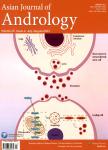Generation of Leydig-like cells:approaches,characterization,and challenges
作者机构:Guangdong Provincial Key Laboratory of Bioengineering MedicineDepartment of Cell BiologyJinan UniversityGuangzhou 510632China lnstitute of Life SciencesWenzhou UniversityWenzhou 325035China Department of Gynecology and ObstetricsThe Second Affiliated Hospital and Yuying Children's Hospital of Wenzhou Medical UniversityWenzhou 325027China National Engineering Research Center of Genetic MedicineJinan UniversityGuangzhou 510632China
出 版 物:《Asian Journal of Andrology》 (亚洲男性学杂志(英文版))
年 卷 期:2022年第24卷第4期
页 面:335-344页
核心收录:
基 金:supported by the National Natural Science Foundation of China(No.91949123 and No.81871155) the Natural Science Foundation of Guangdong Province(No.2021Al515010947) the Forestry Science and Technology Innovation Project of Guangdong Province(No.2021KJCX013) the Zhejiang Provincial Natural Science Foundation(No.LGF21H040001) the Wenzhou City Public Welfare Science and Technology Project(No.ZY2019002 and No.ZY2019005).
主 题:fibroblasts hypogonadism Leydig-like cells reprogramming stem cells
摘 要:Testosterone production by Leydig cells(LCs)plays a crucial role in male reproduction.The functional degeneration of LCs can cause testosterone deficiency,ultimately resulting in primary male hypogonadism.Transplantation of exogenous LCs with the ability to produce testosterone in response to the regulation of the hypothalamus-pituitary-gonad axis could be a promising alternative option to treat male primary hypogonadism.Recent studies have shown that it is possible to generate Leydig-like cells from stem cells by various approaches.In addition,somatic cells,such as embryonic or adult fibroblasts,have also been successfully reprogrammed into Leydig-like cells.In this review,we summarized the recent advances in the generation of Leydig-like cells,with an emphasis on comparing the effectiveness and safety of different protocols used and the cells generated.By further analyzing the characteristics of Leydig-like cells generated from fibroblasts based on small signaling molecules and regulatory factors,we found that although the cells may produce testosterone,they are significantly different from real LCs.For future in vivo applications,it is important that the steroidogenic cells generated be evaluated not only for their steroidogenic functions but also for their overall cell metabolic state by proteomics or transcriptomic tools.



